Photography by Richard Giordano, Eglė Gerulaitytė, and Lila Shaw
There’s a kid driving a Corolla at 120 kph, waving a note at me with the words “I love you” scrawled across the paper. Normally, I would be flattered at this declaration of affection, but the teen’s foot is jammed to the floor, sending his beat-up car screaming beside us on the dirt shoulder. We’re in Saudi Arabia, and, fortunately, I heard the radio call about the excited pubescent teenager, pulled over with the group, and, to the kid’s delight, we made his love letter dreams come true by snapping a group selfie.
Whether traveling as part of a convoy for recreation, during a community group ride, a press trip, or a tour, it can be a lot of fun—especially when it’s running like a well-oiled machine. Moving as a pack allows you to travel through remote areas more safely, prevents participants from getting lost, and, theoretically, ensures everyone arrives at the destination together. As predominantly social creatures, we gain a lot of satisfaction from shared experiences. Gathering around the campfire, helping each other through a tricky bit of trail, or sharing a meal (or a selfie in Saudi Arabia) evokes a sense of camaraderie and bonding, creating memories we look back on with fondness.
However, traveling in a convoy can also be challenging. Ineffective communication, power dynamics, unclear roles and expectations, or disagreements around driving technique, speed, or the itinerary can dampen the mood, while stressors such as vehicle breakdowns or mechanical issues can overwhelm an already tense group. Fortunately, identifying roles and responsibilities ahead of time and focusing on clear communication goes a long way. Here are some ways to ensure a successful convoy experience during your next overland trip.
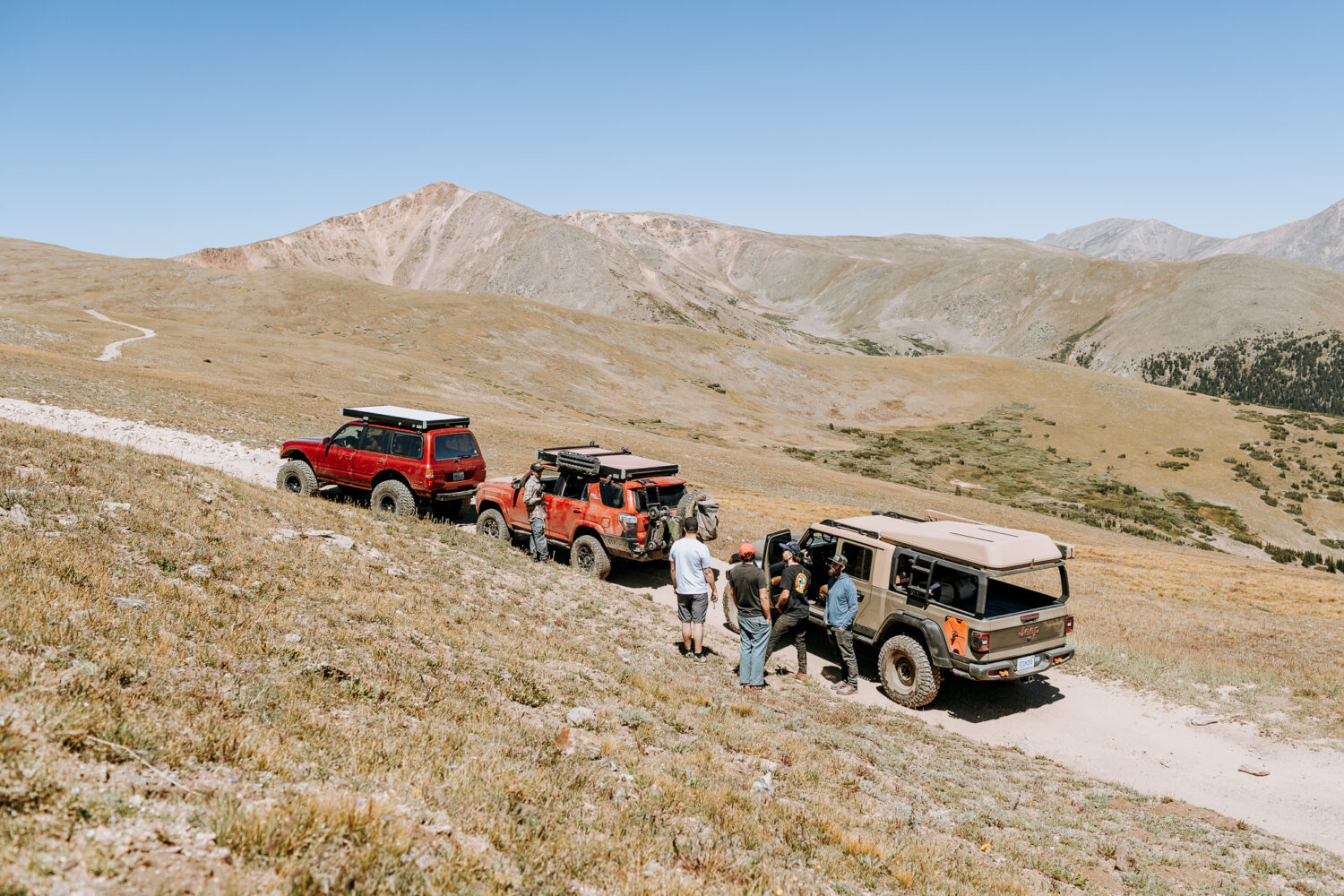
Know Your Role and Responsibilities
Whether you’re in the lead or part of the convoy group, there are ways to keep the operation running smoothly. As with any “group project,” knowing the part each member plays helps with communication, expectation management, and teamwork. If this is all reading a bit day job-y (“Could we just circle back…”), it probably is. Working as an efficient convoy prevents wasted time during which you could be, well, having fun. That’s really the whole point of traveling in a convoy—to see some sights, camp as a group, share a laugh, and come together for a great adventure.
The lead driver is responsible for navigation, scheduling breaks, setting pace, and informing the group on distances and anticipated trail and road conditions. Overland Expo driving instructor Harry Wagner is an eight-time Ultimate Adventure participant who has led Roco Adventure Week in the Sierra Nevadas and Honduras. “If I am leading the group, ideally, I have recently traveled the route and know what to expect to keep surprises to a minimum,” he says. In a more casual environment, such as with a group of friends, you may be running a route for the very first time, although the lead driver typically has the most insight about what’s to come based on GPX tracks, trip reports, and maps.
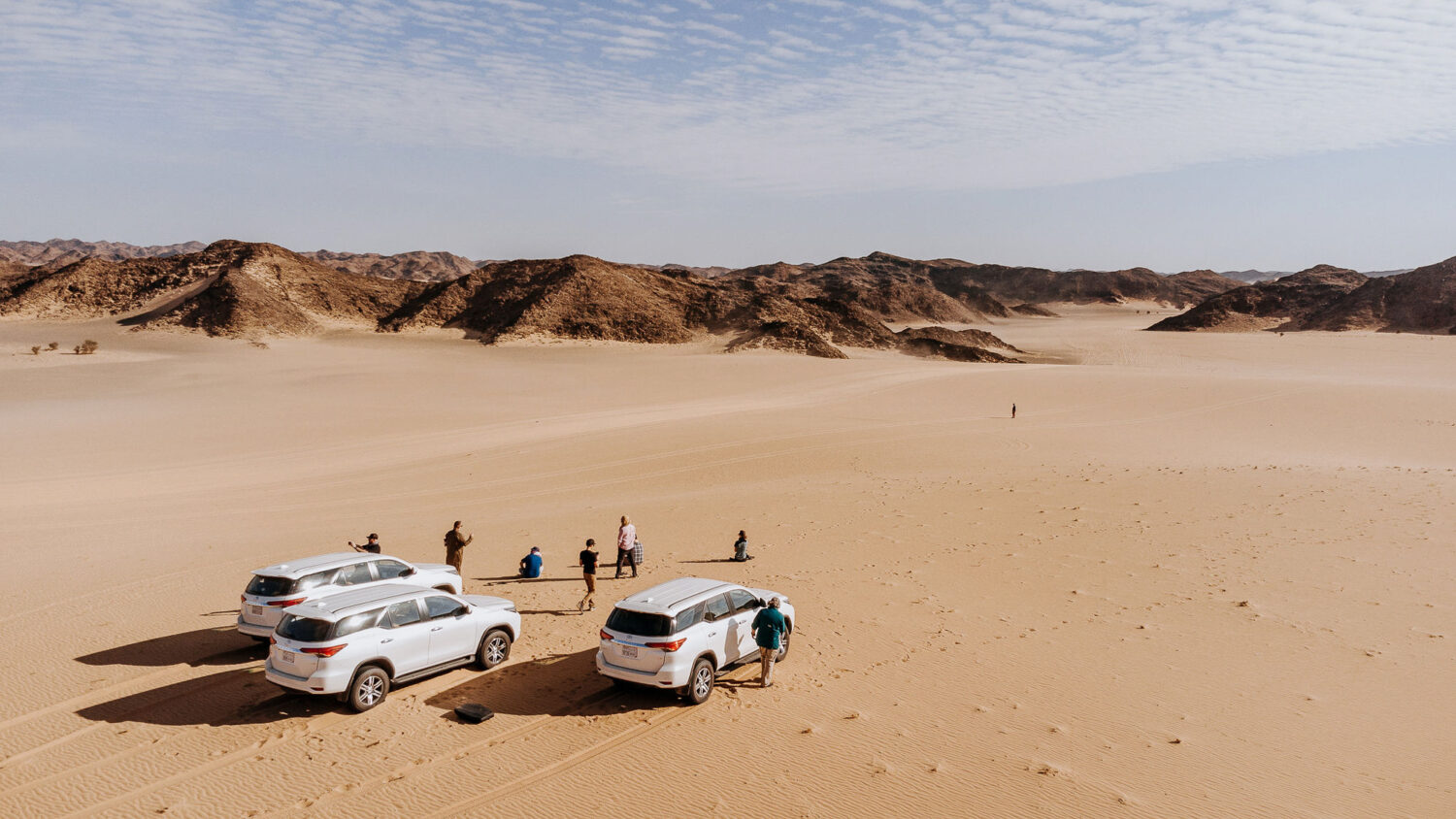
If he’s part of the convoy group, Wagner tries to be sympathetic to the lead by being prompt and keeping suggestions to a minimum while making mental notes of items of interest he may want to return to at another time. Being familiar with your vehicle’s fuel range, stocking up on food and water, bringing your own recovery gear, and ensuring your vehicle is in good working order are all characteristics of a self-sufficient convoy participant. Speaking of fuel—keep an eye on your gauge and have a general idea of your remaining range. A proficient convoy leader will keep this in mind when selecting the next fuel stop for the group.
The last driver in the convoy (also called “whip,” “tail-end Charlie,” or “tail gunner”) is responsible for closing any opened gates, keeping the lead informed of the group’s status(especially if the convoy becomes split in traffic), and setting up lane changes during highway or city driving.
Tip: Convoy rules and responsibilities can vary. Many 4WD groups and Land Rover clubs create their own official convoy procedures for trip participants.
Convoy Communication is Key
In this case, communication refers to radio chatter and clarity between the convoy leader and participants regarding comfortable speeds, time estimates, fuel stops, snack and restroom breaks, and technical obstacles. From the outset, be clear with your skill and comfort levels so the leader may adjust based on participating vehicles and off-pavement capabilities.
“Communication is the fundamental requirement for convoy travel, and it’s completely free of charge outside the initial cost of the device used to communicate itself,” says Kurt Williams, who has run convoys through North and South America, Asia and Russia, Australia, Africa, and Greenland with Expeditions 7 and Expedition Overland.
Kurt has also driven thousands of off-pavement miles with media and film crews, training drives for vehicle manufacturers such as Toyota and Lexus, and off-road trips with up to 20 vehicles in tow. In fact, Kurt and Expedition Overland co-founder Clay Croft taught me all I know about convoy etiquette and driving, and their professionalism and skill behind the wheel heavily influenced how I carry out my own navigation responsibilities, whether in the lead or as a tail gunner.
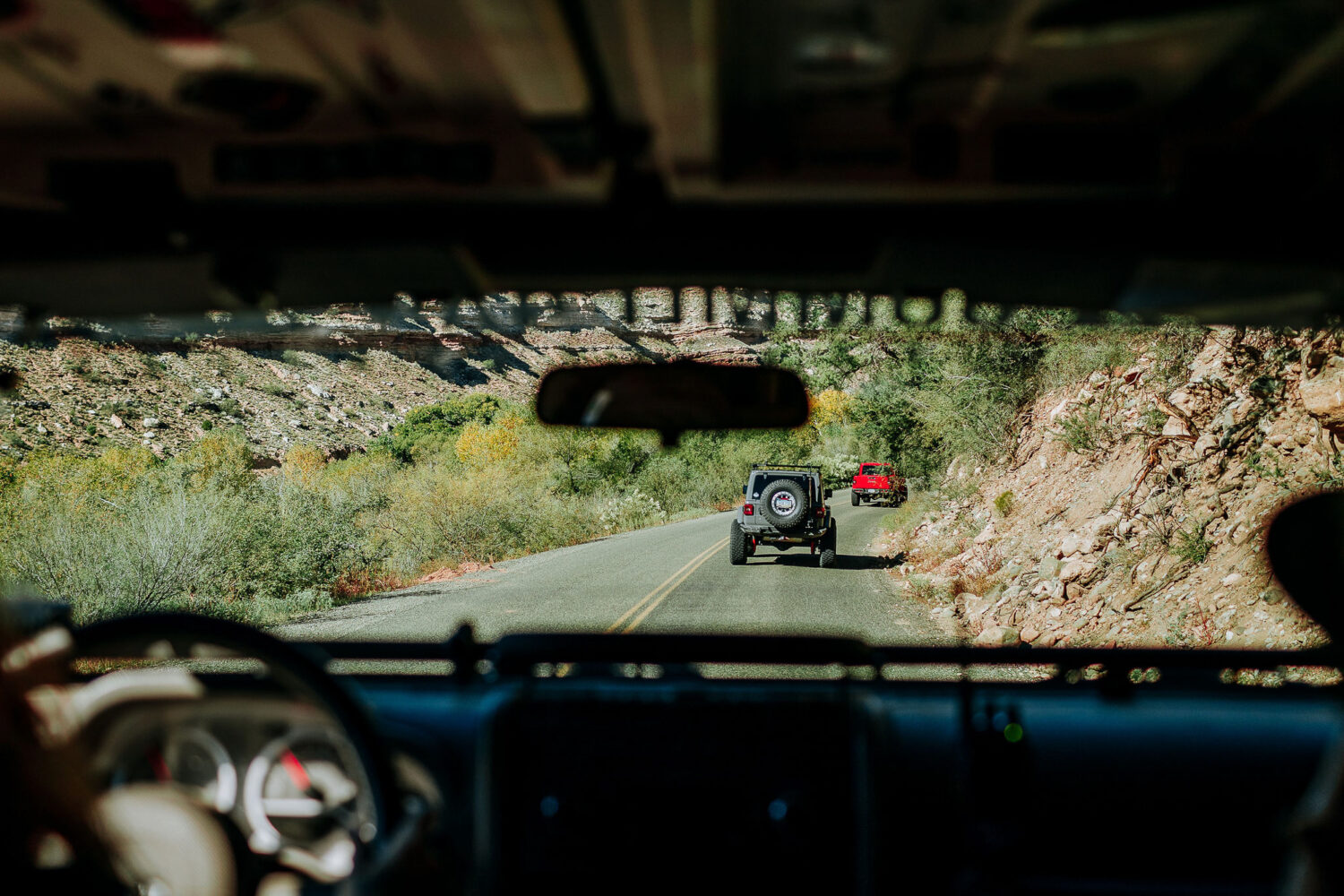
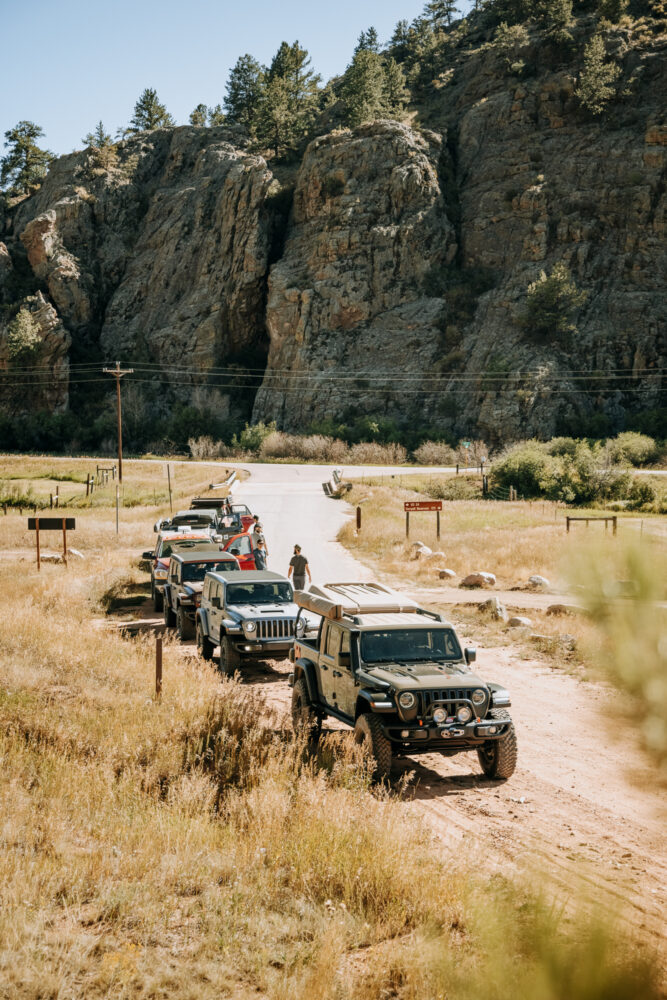
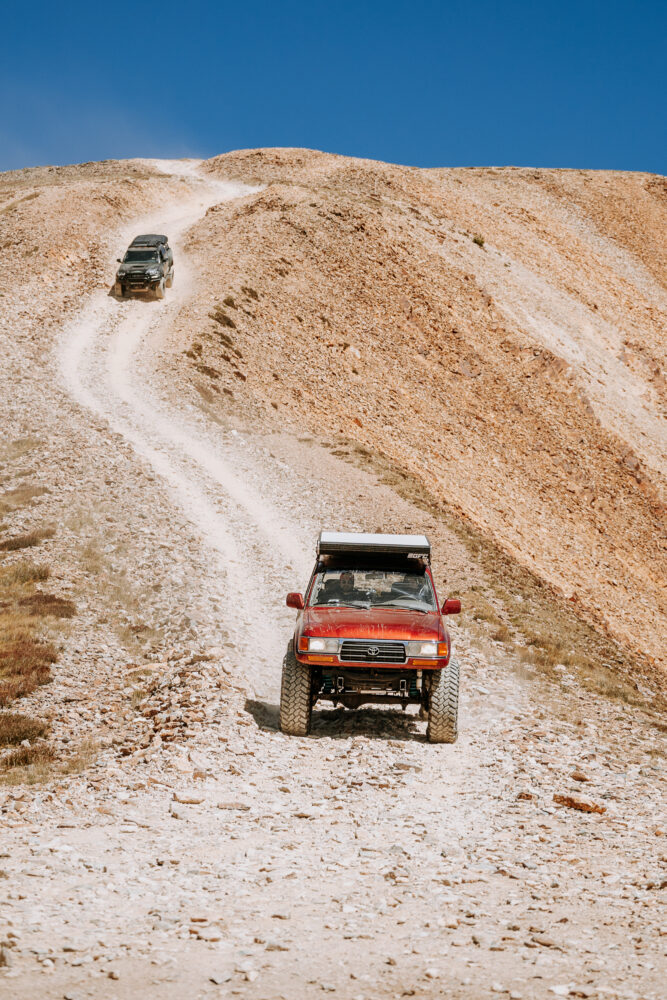
In my experience, effective radio communication means making sure everyone can hear you (this is reflected in the quality of the radios and appropriate distances between vehicles), ensuring you aren’t overwhelming the line with too much chit-chat, giving simple, clear direction, and warning the rest of the convoy of potential hazards. There are certainly times when you can have more fun on the radio; just read the room. You may want to save your best one-liners until you clear the hectic city traffic of Johannesburg—or Phoenix, Houston, or Salt Lake City, for that matter.
Regarding radios, Williams always discusses which system the group will choose before departure, whether with 2M, Ham, GRMS, FRS, or CB. “While mobile phones and satellite devices are great resources for communication,” he says, “they are not practical or reliable in most cases for real-time car-to-car communications. It is my opinion that all vehicles should be equipped with two-way radio, preferably hard-wired (no batteries to die) with an external antenna for optimal range and clarity.”
Lead and rear vehicles are responsible for alerting the rest of the group about any oncoming or upcoming traffic—especially if visibility is poor, the track is narrow or curvy with blind corners, or other drivers are attempting to overtake at speed. Williams likes to call out surface transitions, such as pavement to dirt and terrain exceptions, including big washouts, rocks, and more. In some cases, messages may need to be relayed between vehicles; to address this, trucks with short antennas or the least amount of radio range can be strategically placed in the middle of the group.
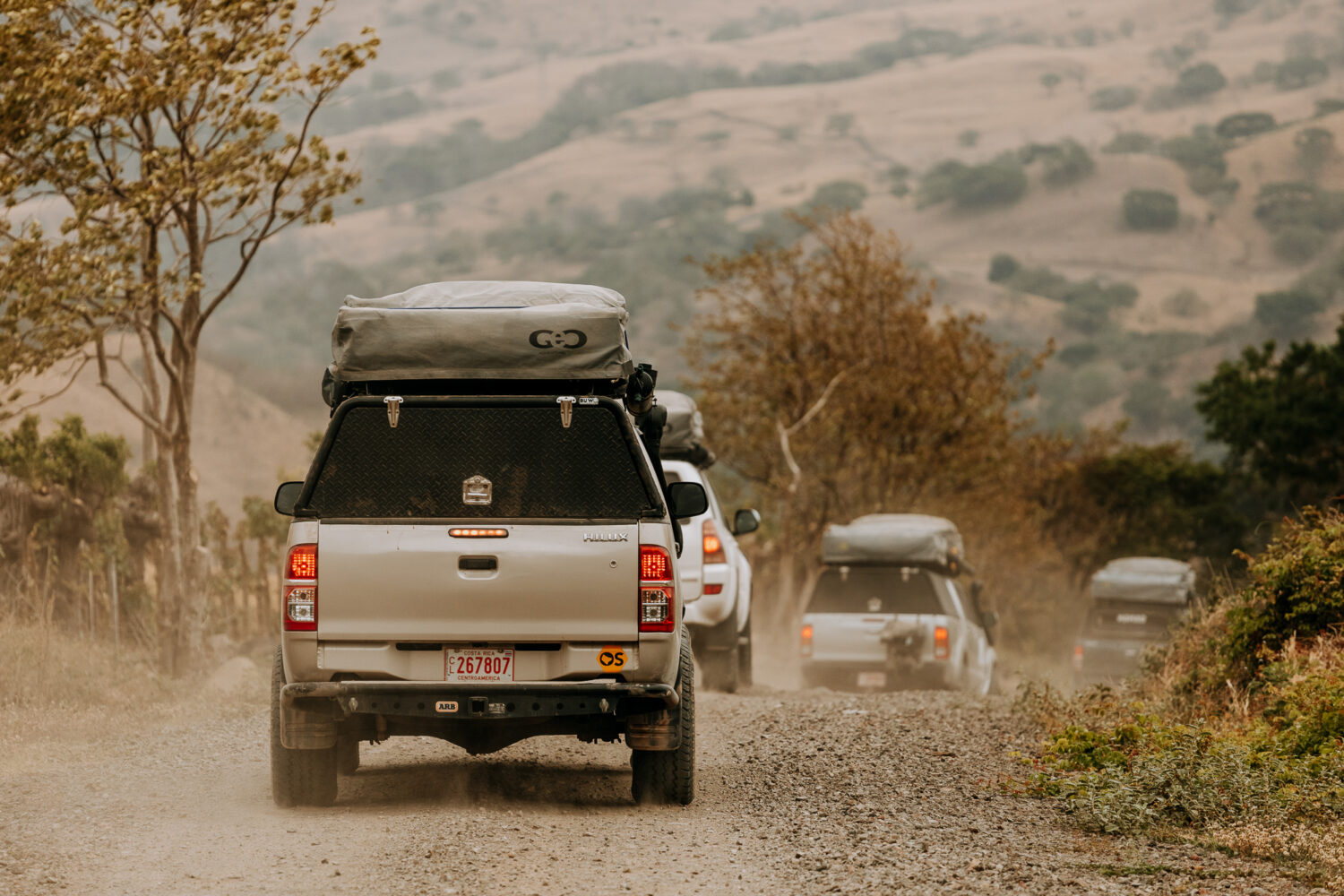
Maintain Comfortable Speeds and Safe Distances
Typically, convoy order is determined by speed: slowest first and fastest last. “In practical terms, I like to follow the rule of keeping the vehicle behind you in sight at all times,” says Wagner. This is assuming the dust isn’t too severe—in those situations, he stops at every crossroad so the vehicle behind knows where to go.
Williams places slower vehicles or less confident drivers in the middle or towards the front, while those who can quickly catch up should be positioned towards the rear. The rear vehicle can have the toughest driving requirements, Kurt says, as “it grows increasingly more difficult to keep the convoy complete as the length and number of vehicles increases, particularly on crowded highways with sporadic passing opportunities.” While you may think this could lead to slower movement, this convoy order increases the efficiency of group travel by not having to wait for someone who missed a turn or stopped for fuel without communicating with the rest of the group.
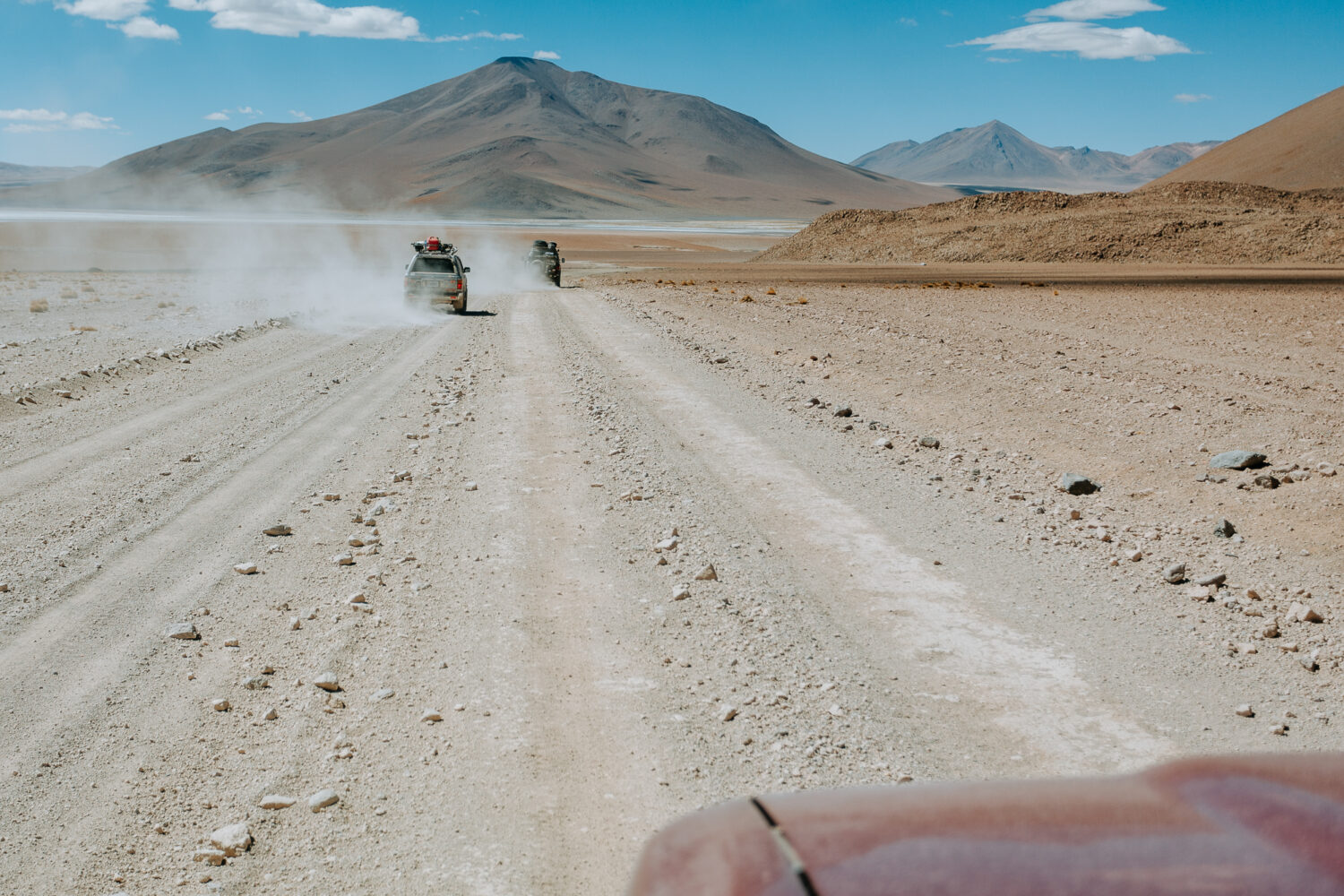
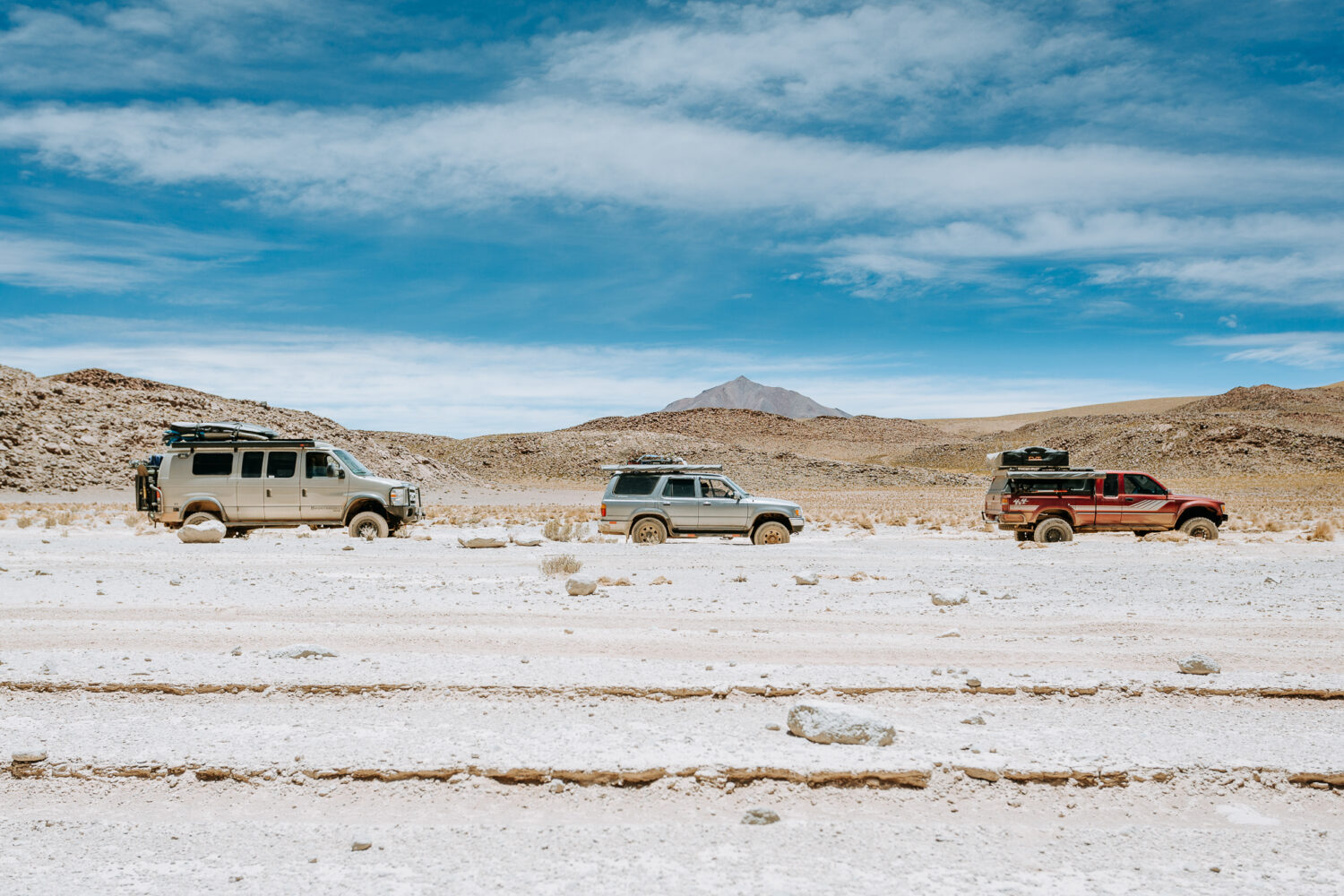
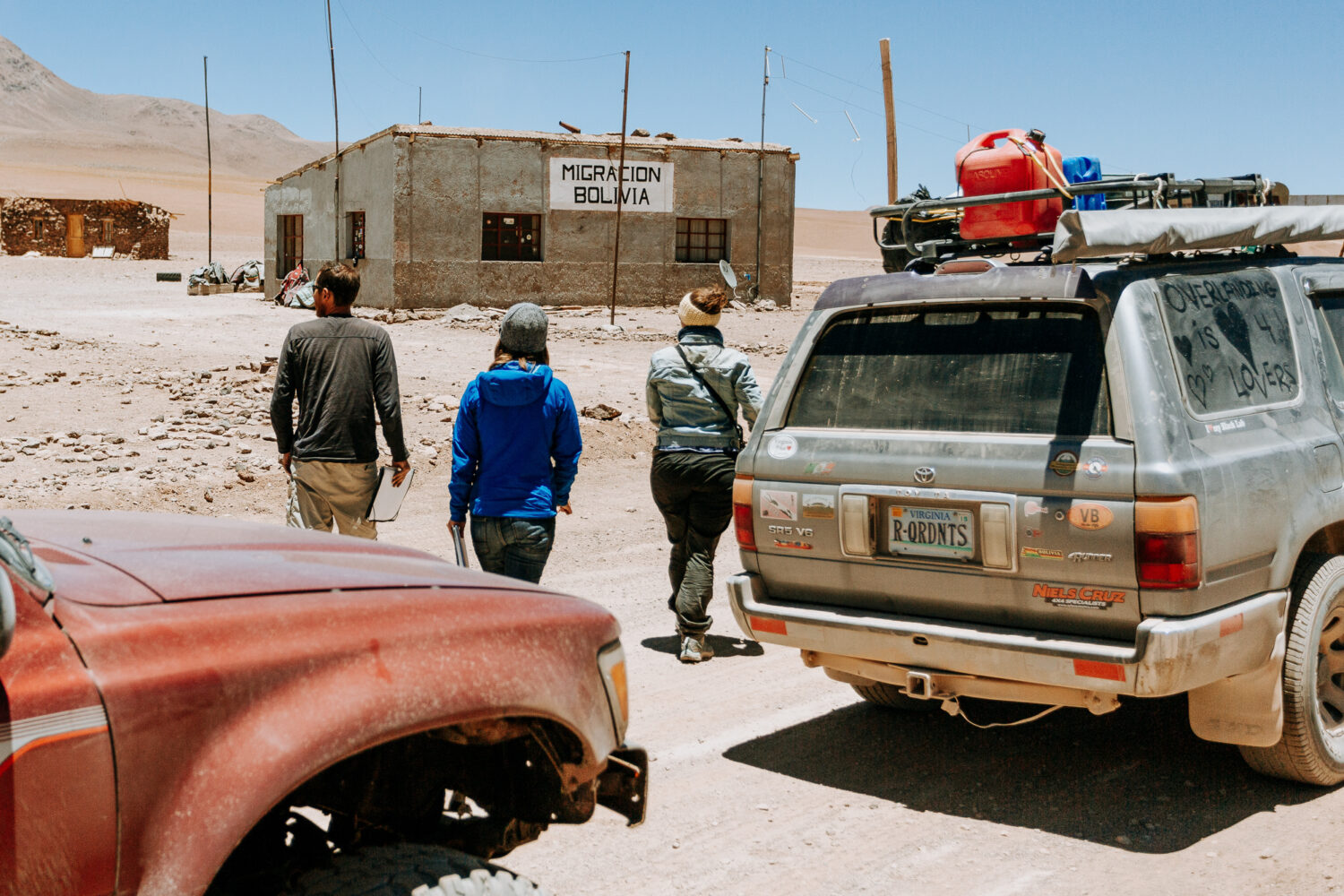
If you’re traveling in an overland convoy with big rigs (MAN trucks, Ivecos, etc.) or trucks with trailers, try to give the drivers enough warning before the next announced turn. While these vehicles are highly capable, they aren’t as agile as a stock Toyota 4Runner or Jeep that can easily turn on a dime. It takes time to redirect the inertia of a heavy truck.
Eglė Gerulaitytė and Jurga Zukauskaite run Big Little Rides, a women’s adventure and motorcycle tour company offering group experiences in Spain, Croatia, Portugal, and Morocco. Knowing that participants’ skill and experience levels vary, Gerulaitytė says the number one rule is to avoid playing catch up and keep up. “Trying to keep up with faster riders is exhausting, unsafe, and sucks all the joy out of riding,” she says. “We ask everyone to ride at their own pace and ability, and if there’s a big contrast in skill level, we’re happy to split the group into an espresso and a cappuccino one.”
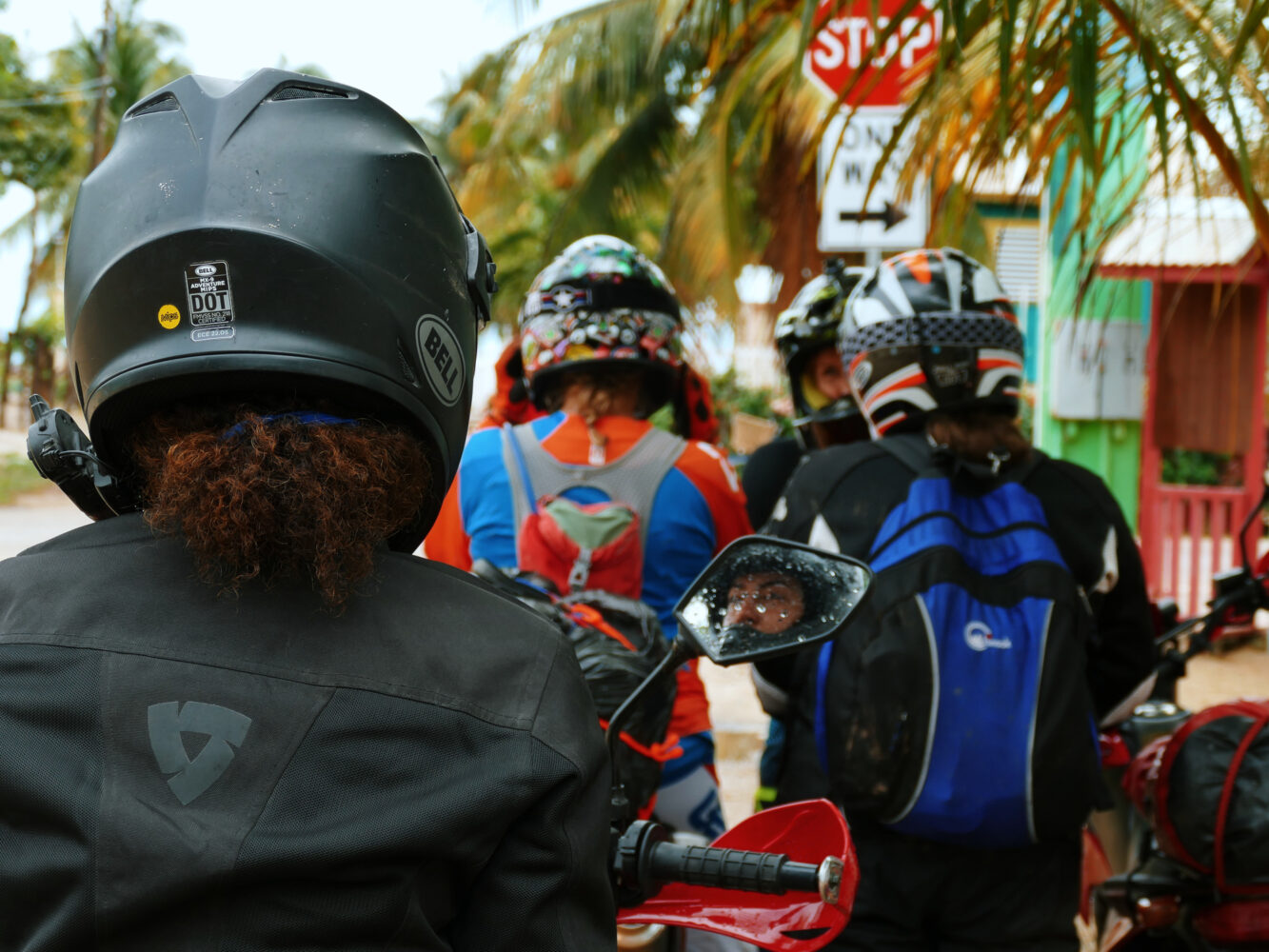
Photo by Eglė Gerulaitytė
Gerulaitytė also emphasizes the importance of keeping a safe distance between riders. This is especially significant when tackling off-pavement obstacles or when visibility is poor. During Big Little Rides tours, Gerulaitytė reminds riders to stay focused and keep an eye on their mirrors. “Hitting that open road or off-road trails someplace epic is exhilarating, and we understand it’s easy to get distracted by the views and the adventure unfolding right before your tires, but staying alert and keeping a safe distance from each other is absolutely key.”
If you are traveling someplace new, it often feels like a barrage of external stimuli is competing for your attention. Monstrous stacks of hay in the bed of an old Hilux! Camels! Vespas splitting lanes! A waterfall! Oh, wow—a stunning mountaintop cathedral! Often, slow and steady ultimately wins the race.
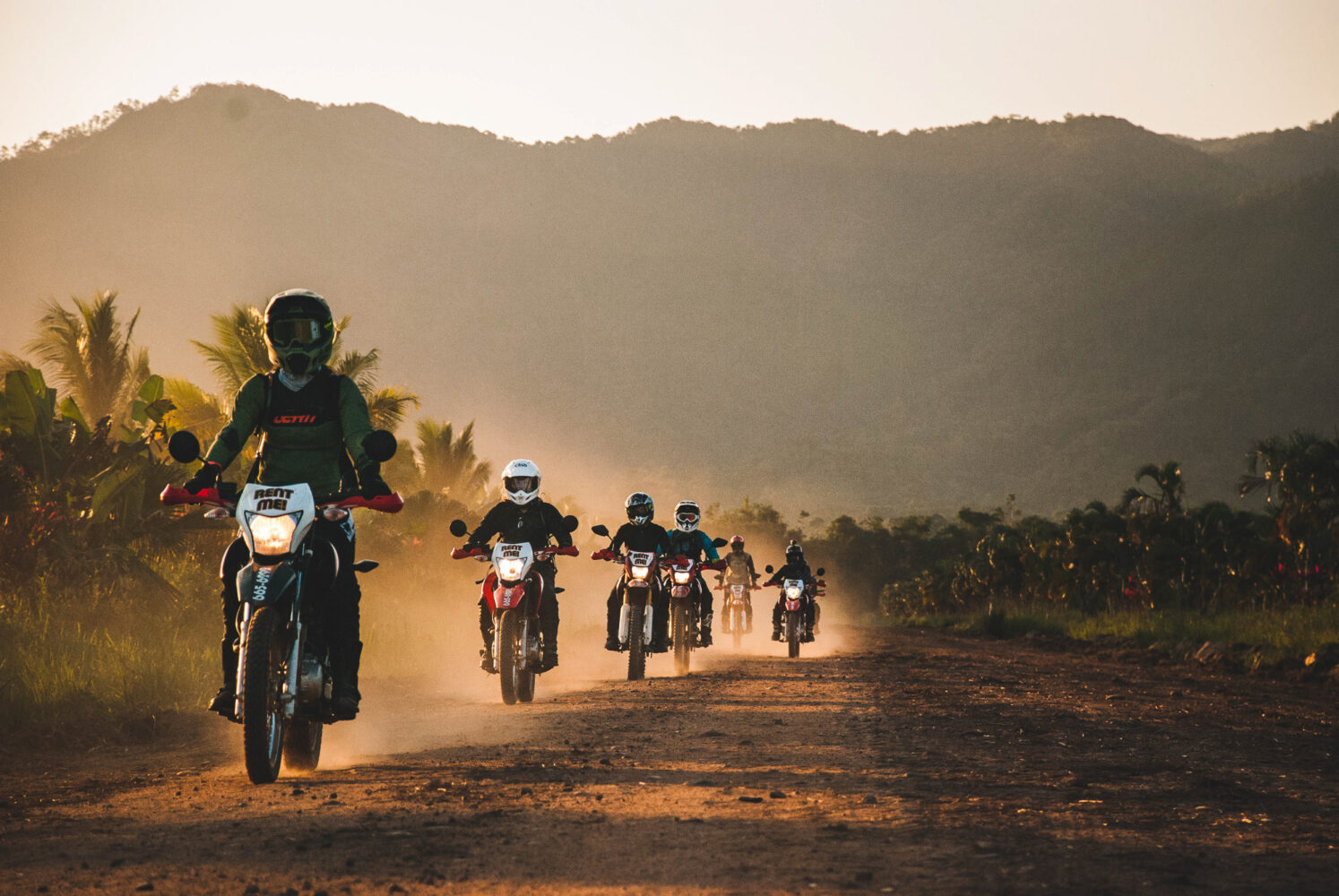
Photo by Lila Shaw
Minimize Impact
Traveling in a group may mean more people and vehicles, but it doesn’t have to mean additional impact. In fact, it’s possible to leave places better than you found them. Staying on previously laid tracks, traveling lightly and in small groups, running lower tire pressures, and engaging 4WD where you can to limit track damage minimizes our footprint on the places we want to return to in the future.
Our responsibility for minimizing impact extends to our campfire practices. It’s crucial to respect fire bans, leave standing trees untouched, use established fire rings where allowed, and keep fires small and free of plastic or foil-lined wrappers. Equally important is ensuring the fire is completely extinguished, and all litter and human waste (when possible) are packed out. Consider bringing gloves and large garbage bags to clean up any trash you may encounter left by others.
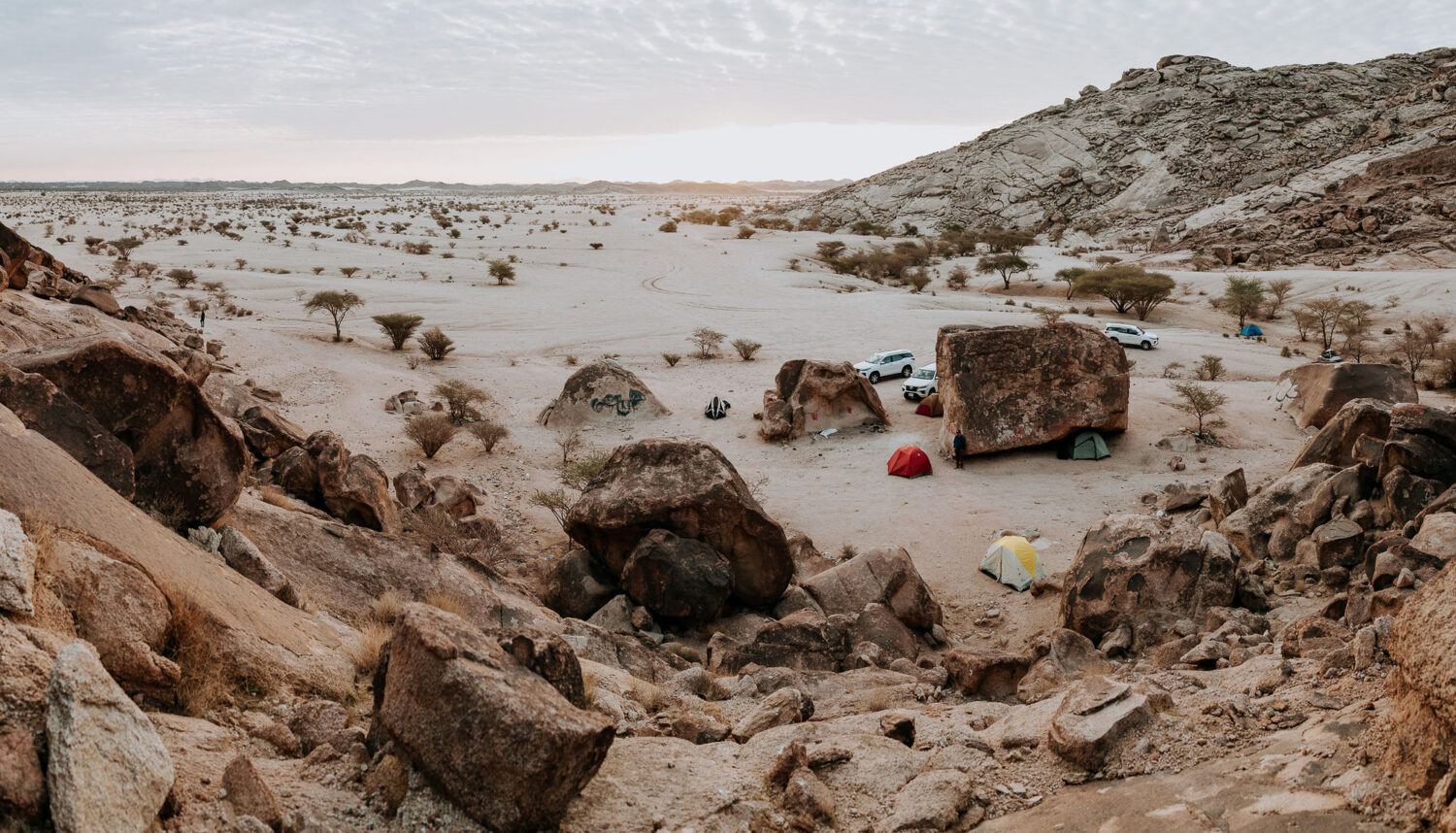
Convoy Tip: Factor in Fuel Stops and Snack Breaks
No award is presented for the least amount of restroom stops or food consumed on an overland trip. Regular breaks allow you to rest and refocus, stretch your legs, build camaraderie, and prevent driver fatigue. If leading, Wagner finds it useful to let the rest of the group know how long the break will be. If everyone else is eating, using the restroom, or drinking water, this is the time when you should be, too.
Of course, life isn’t perfect, so sometimes it is necessary to engage “mode push” or make quick fuel stops to optimize timing. If we’re looking to make up time or need to cover a large distance via highway on Expedition Overland trips, the team often carries out 90-minute driving stints with efficient fuel or restroom stops in between (no dilly-dallying in the snack aisle)—in my experience, this works well.
If you’re in charge of trip planning or leading the group, be aware of the planning fallacy when estimating travel distance and time. The planning fallacy is a common human tendency to underestimate how long a future task will take. As Scott Brady points out in The Principles of Overlanding: Insights on Exploring the World by Vehicle: “Plan for fewer miles traveled due to road closures, mechanical issues, fuel availability, driver fatigue, serendipity, and more. Expect that travel will not go as planned, and you will never be disappointed.”
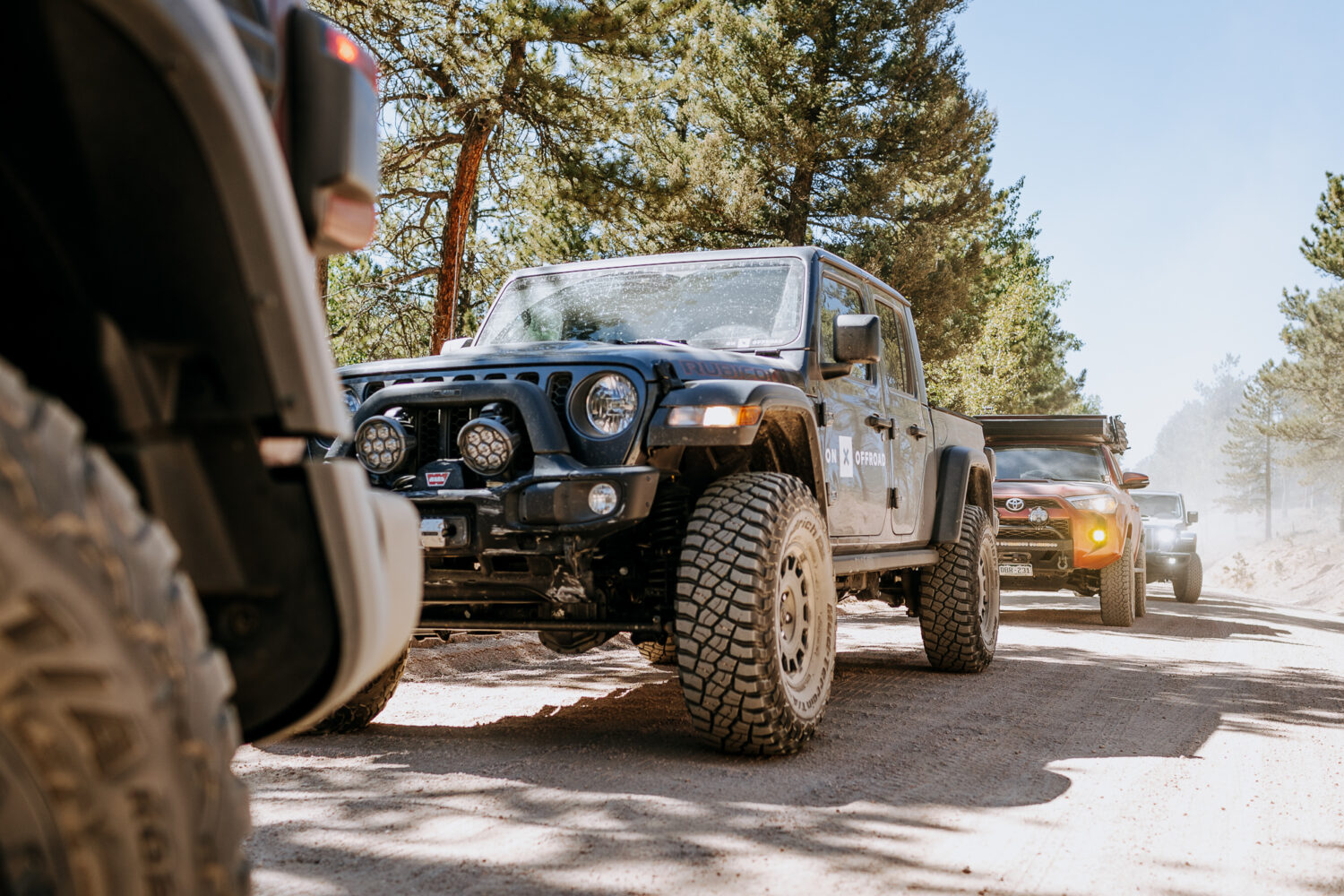
Read More:
Winter Gear Straight From the North Atlantic
Our No Compromise Clause: We do not accept advertorial content or allow advertising to influence our coverage, and our contributors are guaranteed editorial independence. Overland International may earn a small commission from affiliate links included in this article. We appreciate your support.


